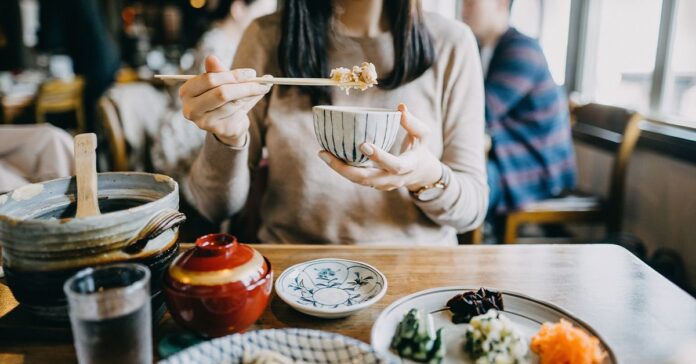Globalization has made it possible for ethnic cuisine to infiltrate other countries more easily. Quinoa, for instance, is a grain native to Peru and Bolivia. With globalization, it became possible for more people in different countries to taste it without having to leave their homes.
The same goes for cuisine. Nowadays, you can find restaurants all over the world serving traditional and fusion culinary delights from a wide variety of cultures, including Spanish, Turkish, and Thai, among others. A diner in Abu Dhabi can pick from different types of steak, while a Canadian family can order Chinese food over the phone.
Then, there is Japanese cuisine.
What people know about Japanese food and cuisine has exploded over the last few decades. Browse through any menu or restaurant gallery online, and you will find a plethora of recognizable dishes beyond sushi.
But, as with any internationally-renowned cuisine, there are several ingredients that are fundamental to making Japanese dishes. Whether you are planning to visit a Japanese restaurant or planning to prepare a meal at home, it is worth noting the following components.
Rice
A staple in Japanese cuisine, you can find this ingredient in a varied selection of dishes and not just sushi. Rice can be served any time of the day, as part of breakfast, an appetizer, side dish, a full meal, or a means to end a meal.
Although rice is common in Asia, not just in Japan, the types used can vary depending on the country. In India, long grain rice is more common, while the Chinese prefer medium length grains. On the other hand, Japanese rice is short, resembling pebbles rather than a bolster pillow, and becomes translucent when cooked.
When cooked, the grains stick together, which makes it easier to form these into rolls, balls, and other shapes. Cooked Japanese rice also tends to be sticky, a useful property when using chopsticks for eating.
Furthermore, rice by itself tastes bland. This is why a host of other ingredients often accompanies rice. Examples include raw fish in sushi, herbs for okayu porridge, or wrapped in seaweed like in the case of onigiri.
Noodles
Coming in a close second are noodles. There are several varieties of noodles used in Japanese dishes, and it’s not just dry or wet forms. Here are some of the most popular types:
- Ramen – arguably the most renowned type of noodle in the country, ramen is thin and appears yellowish. A serving of ramen is often served with soup, meat, and vegetables.
- Udon – the thickest among the different varieties, this white noodle can be served topped with meat (e.g., tempura udon), with soup (e.g., miso-nikomi udon), or as in the case of yaki-udon, stir-fried and seasoned with soy sauce.
- Soba – typically enjoyed on New Year’s Eve, soba is composed of a mixture of wheat flour and buckwheat. Much like udon, the noodles can be served with soup or chilled.
- Yakisoba – not to be confused with soba, yakisoba is made from wheat flour noodles. The noodles are stir-fried, served with slices of pork, vegetables, seasoned, and topped with yakisoba sauce.
Shoyu
A type of soy sauce found in Japan, shoyu is the quintessential ingredient for achieving the taste of umami. Many Asian countries produce and use soy sauce. However, shoyu is unique – instead of a salty profile, the liquid is sweeter.
Shoyu comes in eight different types. Some variations contain soybeans, wheat, fermented rice, or a combination of these ingredients.
Out of the eight, koikuchi is the most prevalent. This dark, strong-flavored condiment accounts for approximately 80 percent of the soy sauce sold in the country. It is the type of soy sauce used by the brand Kikkoman and used to make teriyaki sauce or added to hot pots.
Miso
Found in a soup bearing the same name, the stock is produced by fermenting soybeans, rice, and some types of wheat grains with a type of fungus. As the Japanese love miso and all things fermented, you would be hard-pressed to go on an entire day without getting a serving of miso soup. Besides soup, miso can also be used in dips, as a coating for vegetables or pickling other foods.
Mirin
Most local dishes contain this type of cooking wine. Without this sake, you will have difficulty making any Japanese dish. Its distinct sweet flavor is produced through fermentation.
Mirin comes in three different forms: hon mirin, shio mirin, and shin mirin. Hon mirin contains 14 percent alcohol and can take up to 60 days to brew and produce. Some people drink it straight during New Year as part of a traditional celebration.
A cheaper, slightly saltier variation is the shio mirin. This concoction is also quicker to produce, requiring no more than 40 days. Shin mirin, on the other hand, is considered more synthetic and contains no more than 1 percent alcohol.
Soybeans
Small, simple, and inconspicuous as they may appear, soybeans are another chief component of Asian dishes. They are adaptable and can be made in a selection of foods and ingredients. In Japan alone, soybeans are used to make some of the previously-mentioned staples, including tofu, miso, and shoyu, among others.
The use of soybeans shows the creativity and resourcefulness of the Japanese. Tofu skin, for instance, functions as a substitute for cheese in vegetarian dishes. Frying the tofu creates aburaage, a common ingredient found in soups, rice, and noodle dishes.
Wasabi
Typically served to give dishes a spicy kick, wasabi refers to a root crop that is akin to horseradish. Chefs grate the root to produce a green paste then served alongside sushi or mixed in soups. It is readily found in fresh markets, although you can also buy them packed in tubes at the supermarket. Remember these ingredients the next time you go to an Asian store, supermarket, or dine in a Japanese restaurant. Armed with this information, you can identify what ingredients were used and even determine if it is authentic Japanese cuisine.


























































